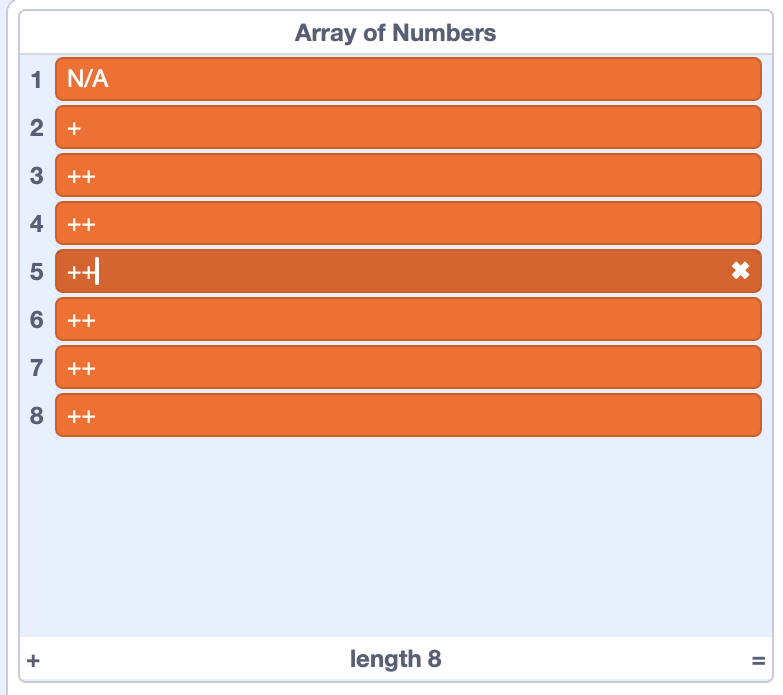29 Remove One: Polyhedral Dice
By: Violet Griffin
Remove One: Polyhedral Dice
Description
Using a set of digital polyhedral dice, students will attempt to track how probability changes when you increase the number of sides a die has.
Introduction
- Make predictions: students will write down how they believe the array of numbers rolled will be impacted by increasing the number of sides on a die.
Working on it
1. Students will be instructed to make a list in Scratch with a number of entries equal to the number of sides on the die they will be rolling, multiplied by two. They will begin with a 4 sided die. Students will allocate 15 markers (represented by +) amongst those numbers, indicating which numbers they predict will be rolled most frequently.

2. They will then roll 2 d4’s and remove a marker (if there is one) from beside the number that equals the sum of the two dice. They will then repeat this task until all of the markers are gone from the list, and note down how many times they had to repeat the process in order to remove all the markers. They may then make any changes they’d like in regards to where they placed the markers, and then will then repeat the entire process. They will make note of any changes they had to make, and why they chose to make those changes. They will then answer some questions by repeating this experiment with different dice. Then in a separate file students will pick one array and attempt to represent this array visually in Scratch, using whatever manner they choose (stamping, movements, etc.).
Consolidation
1. Students will write down their observations from the experiment and explain what they noticed. They should aim to answer three questions: 1) How the most likely array of numbers changes when you increase the number of sides on a die (e.g. does the amount of numbers that are most likely to be rolled increase, decrease, or stay the same?) 2) What do you notice about the most commonly rolled numbers? 3) How can we use this experiment to reliably predict the standard array for a die with any number of sides?
Resource information
Main Subject: Math
Other Integrated Subjects: Coding
Grade(s): 7
Learning to Code: Yes
Coding to Learn: Yes
URL Link to Code: https://scratch.mit.edu/projects/1140294005
Media Attributions
- Array of Numbers
